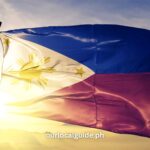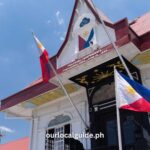Famous Festivals in the Philippines: A Vibrant Celebration of Culture and Tradition
The Philippines, an archipelago known for its stunning landscapes and rich cultural heritage, is also famous for its vibrant festivals. These festivals, known locally as “fiestas,” are a colorful tapestry of the country’s history, religion, and traditions.
Each festival is a unique blend of indigenous practices and influences from Spanish colonialism, making them an integral part of Filipino culture. Here, we explore some of the most famous festivals in the Philippines, showcasing their unique features and the stories behind them.
This article aims to provide a casual yet informative glimpse into the heart of Filipino festivities, perfect for general readers with an interest in cultural exploration.
1. Sinulog Festival – Cebu City
Held every third Sunday of January in Cebu City, the Sinulog Festival is a religious and cultural celebration in honor of the Santo Niño, or the Child Jesus. The festival features a grand parade with participants in bright, colorful costumes dancing to the rhythm of drums, trumpets, and native gongs.
The Sinulog dance, characterized by its forward-backward movement, symbolizes the pagan past and the Christian present of the Filipino people.
2. Ati-Atihan Festival – Aklan
The Ati-Atihan Festival, celebrated in January in the province of Aklan, is known as the “Mother of All Philippine Festivals.” It honors the Santo Niño and commemorates the barter of Panay Island from the indigenous Ati people to the Bornean datus.
The festival is famous for its participants’ face and body paint in black to resemble the Atis, vibrant costumes, and spirited street dancing to indigenous music.
3. Panagbenga Festival – Baguio City
The Panagbenga Festival, held throughout February in Baguio City, is a month-long celebration of flowers, reflecting the city’s abundance of blooms. The highlight is the grand parade of floats decorated entirely with flowers, accompanied by street dancing by participants dressed in flower-inspired costumes.
This festival not only showcases the beauty of Baguio’s flowers but also promotes environmental protection and community spirit.
4. Pahiyas Festival – Lucban, Quezon
Celebrated every 15th of May in honor of San Isidro Labrador, the patron saint of farmers, the Pahiyas Festival is a thanksgiving for a bountiful harvest. The homes of Lucban are adorned with colorful decorations, including kiping, a leaf-shaped wafer made of rice dough, and other agricultural produce.
The festival attracts tourists with its vibrant display of creativity, culture, and community’s gratitude for abundance.
5. Kadayawan Festival – Davao City
Davao City’s Kadayawan Festival, celebrated in August, is a thanksgiving festival for the bountiful harvest of fruits and orchids during the season. It is also a tribute to the city’s indigenous tribes with a week-long celebration featuring street dancing, floral parades, and cultural performances.
The festival’s name derives from the friendly greeting “Madayaw,” from the Dabawenyo word “dayaw,” meaning good, valuable, superior, or beautiful.
6. Moriones Festival – Marinduque
The Moriones Festival is a Holy Week event in the island province of Marinduque. This festival is known for its participants, who dress as Roman soldiers or “Moriones,” reenacting scenes from the Passion of Christ.
The festival combines religious observance with cultural entertainment, offering street plays, parades, and the unique practice of penitents wearing masks of Roman soldiers.
7. MassKara Festival – Bacolod City
The MassKara Festival, held every fourth Sunday of October in Bacolod City, is a vibrant celebration marked by its colorful masks with smiling faces, symbolizing the city’s moniker as the “City of Smiles.” The festival was originally conceived to uplift the spirits of the locals during a period of crisis in the 1980s.
Today, it includes a street dance competition, beauty pageants, food festivals, and sports events, showcasing Bacolod’s culture, artistry, and resilience.
Conclusion
The festivals of the Philippines are a testament to the country’s diverse cultural heritage, blending indigenous, Spanish, and modern influences into a vibrant celebration of life. Each festival, with its unique rituals, dances, and themes, tells a story of faith, thanksgiving, and community spirit.
These celebrations not only attract tourists from around the world but also serve as a reminder of the Filipinos’ resilience, creativity, and strong sense of community.
Whether through the religious reverence of the Sinulog and Ati-Atihan festivals, the environmental homage of the Panagbenga, or the joyful expressions of the MassKara Festival, the Philippines offers a rich tapestry of festivities that are as diverse and dynamic as its people.
















